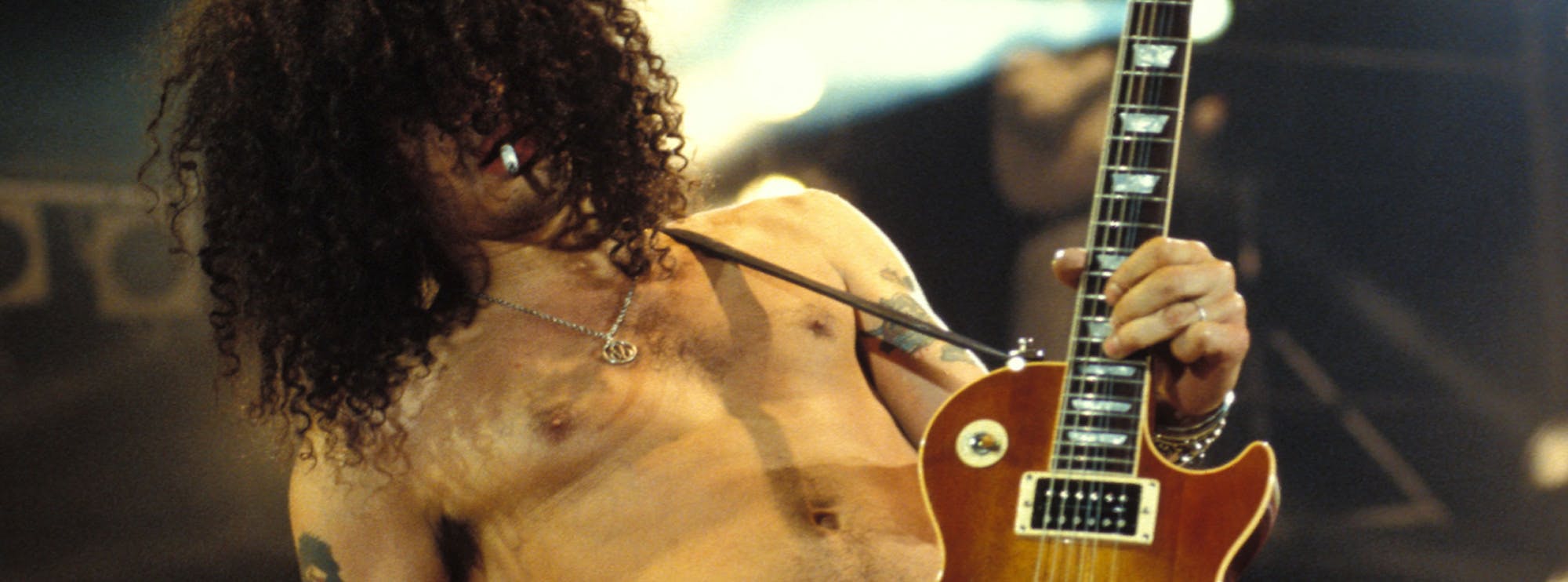Highway to Hell: An in depth analysis for guitarists
Guitar lessons by Danny Gill
"Highway to Hell" is the sixth studio album by Australian hard rock band AC/DC, released in 1979. It was the last album featuring lead vocalist Bon Scott, who tragically passed away shortly after its release. Highway to Hell became AC/DC’s first LP to break into the US Top 100, eventually reaching number 17, and it propelled the band into the top ranks of hard rock acts. It is the second highest selling AC/DC album behind Back in Black and is generally considered one of the greatest hard rock albums ever made. This album showcases the incredible guitar work of lead guitarist Angus Young, with his distinctive playing style and signature techniques.
In this guitar lesson course, LickLibrary veteran, Danny Gill walks you through the many highlights of each song from the metal icons, one phrase at a time, including Angus young’s incredible guitar solos. In this analysis, we will delve into each song, discussing guitar scales, solo analysis, and Angus Young's contribution to the album.
Track 1: Highway to Hell
The title track kicks off the album with a bang. The riff is built on the A Mixolydian scale, with a strong emphasis on power chords. The verse features some syncopated rhythms and palm muting, while the chorus showcases a classic AC/DC anthemic hook. The solo is a masterclass in string bending, with bluesy bends and double stops that guitarists will appreciate.
Track 2: Girls Got Rhythm
A catchy, bluesy riff in the key of A opens this track. The verse features a driving, galloping rhythm with power chords and barre chords. The solo, also in A, highlights Angus' fluid legato technique and his tasteful use of vibrato.
Track 3: Walk All Over You
This track is built around a powerful riff in the key of E. The verse features a heavy use of power chords and syncopated rhythms. The solo is a perfect example of Angus Young's ability to craft a memorable and melodic lead, utilizing slides and pre-bends, with a strong emphasis on the E minor pentatonic scale.
Track 4: Touch Too Much
In this track, we find a more subdued riff in the key of G. The verse showcases Angus' ability to create melodic chord progressions with arpeggiated chord progressions and open-string riffs. The solo features a masterful use of the G major scale, with a perfect blend of legato and alternate picking techniques.
Track 5: Beating Around the Bush
This track features a fast-paced, driving riff in the key of A. The verse highlights Angus' skill at creating a tight, rhythmic foundation using palm muting and galloping rhythms. The solo is an energetic display of rapid-fire alternate picking and string bending, with a heavy emphasis on the A minor pentatonic scale.
Track 6: Shot Down in Flames
With a powerful riff in the key of B, this track showcases a classic AC/DC sound. The verse features a tight, rhythmic groove with syncopated rhythms and power chords. The solo is a fiery blend of slides, string bending, and chromaticism, which demonstrates Angus' ability to create a memorable and melodic lead.
Track 7: Get It Hot
In this track, we find a catchy riff in the key of G. The verse highlights Angus' ability to create a tight, rhythmic foundation with a combination of power chords and open-string riffs. The solo showcases Angus' penchant for melodic, bluesy phrasing, with a strong emphasis on the G major scale.
Track 8: If You Want Blood (You've Got It)
This track features a powerful riff in the key of E. The verse showcases a driving, rhythmic groove with power chords and syncopated rhythms. The solo is a blazing display of Angus' guitar prowess, featuring rapid-fire alternate picking, string bending, and a tasteful use of the E minor pentatonic scale.
Track 9: Love Hungry Man
In this track, we find a more subdued riff in the key of C. The verse showcases Angus' ability to create melodic chord progressions with arpeggiated chord progressions and open-string riffs. The solo highlights Angus' fluid legato technique, with a strong emphasis on the C major scale and a tasteful use of vibrato.
Track 10: Night Prowler
The album concludes with a slow, bluesy riff in the key of A. The verse features a moody, arpeggiated chord progression that showcases Angus' ability to create atmospheric soundscapes. The solo is a perfect example of his melodic prowess, utilizing double stops, slides, and bluesy bends, all within the framework of the A minor pentatonic scale.
Angus Young's Contribution
Angus Young's guitar work on "Highway to Hell" is nothing short of iconic. His unmistakable playing style, with its raw energy and melodic sensibilities, helped define the sound of AC/DC and influenced generations of guitarists. Throughout the album, Angus masterfully combines a variety of guitar techniques to create memorable riffs, solos, and chord progressions that have stood the test of time. "Highway to Hell" is an excellent showcase of Angus Young's diverse guitar techniques that helped define AC/DC's iconic sound. One prominent technique is his use of vibrato, which adds expressiveness to his solos and melodic phrasing. Angus also employs alternate picking to create a rapid-fire, driving rhythm in tracks like "Beating Around the Bush" and "Shot Down in Flames."
Guitarists can also learn from Angus' use of galloping rhythms and arpeggiated chord progressions, which add variety and depth to the album. Finally, chromaticism is used to add tension and color to his solos, further demonstrating Angus' ability to craft memorable and engaging guitar work in "Highway to Hell."
In conclusion, "Highway to Hell" is a landmark album for AC/DC and a must-listen for any guitarist looking to learn from one of the greats. Angus Young's playing on this album has inspired countless guitarists, and understanding the techniques he employed can provide valuable insights into the creation of memorable riffs, solos, and chord progressions. By studying this album, guitarists can gain a deeper appreciation for the craftsmanship and artistry that goes into creating timeless rock music.
Guitar Techniques Used in Highway to Hell
Throughout the album, Angus demonstrates his mastery of string bending techniques, such as bluesy bends and double stop bends, which add a distinctive character to his solos. Slides and pre-bends are also used to create smooth transitions and emphasize certain notes. Power chords, palm muting, and barre chords provide a solid rhythmic foundation for many tracks, while syncopated rhythms and open-string riffs add a dynamic edge.
- Vibrato
- Alternate Picking
- Legato
- Double Stop Bends
- String Bending
- Slides
- Pre-Bends
- Power Chords
- Palm Muting
- Barre Chords
- Syncopated Rhythms
- Open-String Riffs
- Bluesy Bends
- Galloping Rhythms
- Arpeggiated Chord Progressions
- Chromaticism

About The Tutor
Tutor Profile
Danny Gill
Danny Gill is, without a doubt, the most loved tutor by our community. With an incredible array of DVDs and web lessons for LickLibrary covering a wide variety of topics all of which he covers with incredible detail, it's no wonder he carries as much respect as he does. As...




